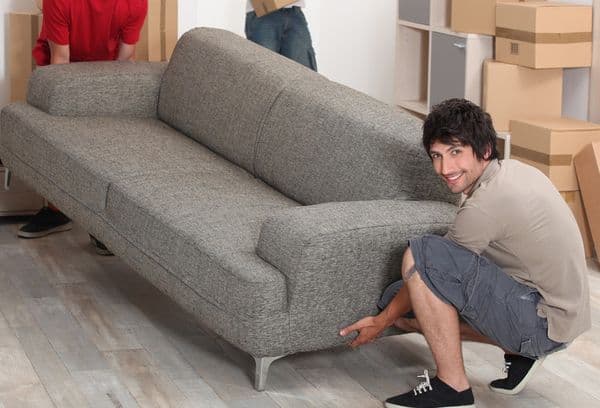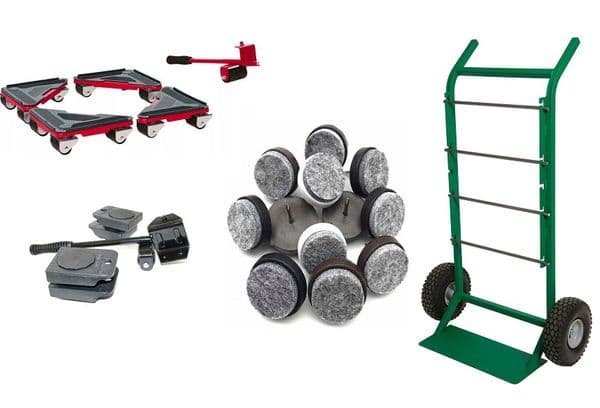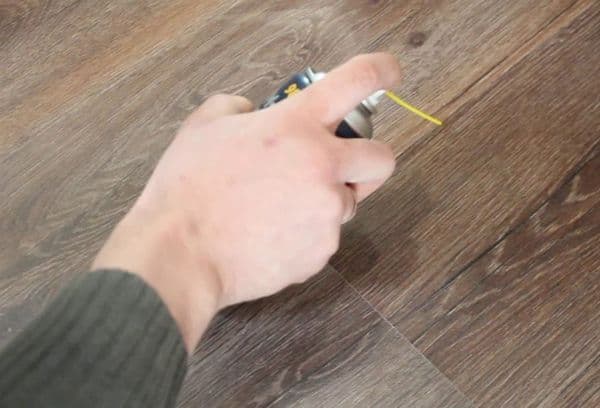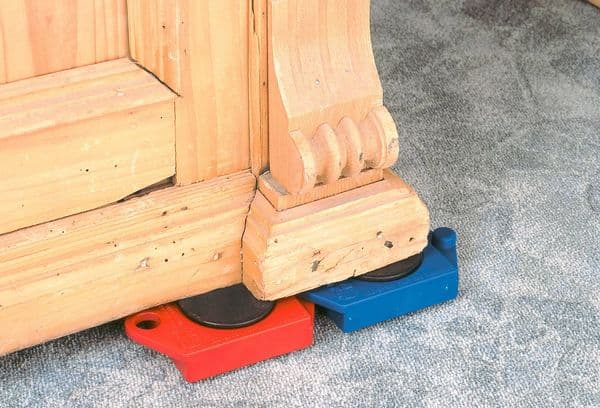How and with what to move heavy furniture on the floor without damaging it
During renovation or rearrangement, you often have to rearrange interior items yourself. To move heavy furniture without damaging it, the floor or walls, you should use special tools. If this is not possible, improvised means will do, from a piece of fabric to pork skin. The main task is to enhance gliding.
Special tool
The lifts and trolleys that freight companies have in their arsenal are good because they are universal, suitable for any furniture and any covering, be it smooth parquet or long-pile carpet.

Special equipment includes:
- Transport trolley - a device similar to a two-wheeled cart, but with a jack and safety straps. Such carts can be used one at a time, but in this case you will have to hold the top of the furniture, which will tilt strongly. It is preferable to place large items on two to four carts and transport them flat in a vertical/horizontal position.
- Belt conveyor — special strong and long belts in the form of a loop. They are attached crosswise under the bottom of the furniture. Loaders throw the free ends of the hinges over their shoulders, lift the furniture and carry it.
- Household conveyor - a small jack or lever and several platforms with wheels, less often with a smooth sliding sole. It’s difficult to cope with this alone, despite the promises of advertising.One person should tilt the furniture slightly, the other should slide the lever/jack "spade" in and increase the gap to have a helper place the platforms under the corners or legs of the furniture.
- Sliding plastic or felt pads for corners/legs. As a rule, they are fastened with especially tenacious double-sided tape, but fastening with spikes or nails is also common. In any way you need to tilt/lift heavy furniture, attach a backing and lower the thing - with its weight it will press the nail into the leg/corner.
Advice
Plastic pads are more suitable for pile and pile-loop floor coverings, felt pads are more suitable for smooth ones: parquet, laminate, linoleum, tiles.
Available means
By and large, all available tools are divided into two groups:
- substrates;
- lubricants
What to put on the floor
Obviously, improving the sliding properties of a carpet, rug or rug, especially a woven one, is a thankless task. It only makes sense to lubricate or wet a smooth floor. The principle is to leave a slippery mark and move furniture along it.
Floor lubricant:
- Water or soap and water. Plus - after dragging the product is easily removed, the floor becomes cleaner. The downside is that you will have to wet the floor a lot, and this is harmful for parquet and laminate flooring - they will have to be rubbed dry right away.
- Dish gel. A solution is made from it or the product is poured undiluted. The downside is that the floors will then have to be washed for quite some time: the gel foams a lot.
- Silicone lubricant, including WD-40. The disadvantage is that such a lubricant is even worse to clean than dish gel. And besides, for example, WD-40 contains a solvent, and this is a risk for any floor, except, perhaps, stone and tile.
- Lubricant (intimate lubricant). It is quite easy to clean, but you need to understand that more than one bottle will be used, especially if you need to move the wardrobe into the next room, and the specific aroma of the fragrance will hover in the room for quite a long time.
Homemade backings for corners and legs:
- Pork skin. Oddly enough, the most popular substitute for plastic substrates. The magazine purity-en.htgetrid.com warns that the greasy mark will have to be washed thoroughly, and pieces of fat will get clogged in the cracks between the parquet/laminate parts.
- Plastic covers. The second most popular tool, suitable for furniture with legs. Soft plastic almost does not harm the floors; instead, it wears off on its own, but is still capable of scratching the protective film of parquet, laminate, and linoleum.
- Garden or similar two-wheeled cart. It is used in the same way as a special one, but does not have a jack and sufficiently long and strong belts to fix the furniture on the site. You will have to work hard to perch the cabinet on such a structure, and then carefully control the balance, otherwise the furniture will collapse on the operator.
- Foil or tracing paper in several layers. A significant disadvantage is the thickness: very heavy furniture will break through these materials. In addition, foil can leave micro-scratches on the floor.
- Milk cartons turned inside out. The tool is convenient on furniture with legs, but it is almost impossible to secure bags on a “skirt”. In addition, they are quite thin and not suitable for massive furniture.
- Bath rug. The non-slip side is quite securely fixed to the sole of the furniture, and the pile moves well on smooth types of floors. This method is not recommended for dragging over carpets, rugs, etc. coverings.
- A piece of linoleum or old jeans. They are placed in the corners or bottom of furniture and pulled by the free end. The disadvantage of this method is that gliding does not improve as much as with other approaches, and there is a high risk of damaging your back. In addition, there is a possibility of pulling too high and knocking over a cabinet or chest of drawers.
- A piece of hardboard. One side is rough and the other is glossy. If you attach belts to one edge, then dragging furniture on such a backing will be convenient and quite safe, but it is recommended to additionally moisten the floor with soap and water.
- Wooden rolling pins. This ancient Egyptian method involves rearranging rolling pins and rolling furniture over them. The method is labor-intensive, unsafe, not suitable for furniture with legs, and the entire arsenal of rolling pins will most likely come to an end: they will be irreparably scratched.
To rearrange heavy furniture, it is better to disassemble it and move it in parts. If this is not possible, consider calling movers. If you have a couple of strong helpers, try pulling massive objects yourself. Slippery floors and underlays will make the task easier. Do not move heavy objects alone: this is dangerous for you, the furniture, and the environment. Be careful and luck will be on your side.


